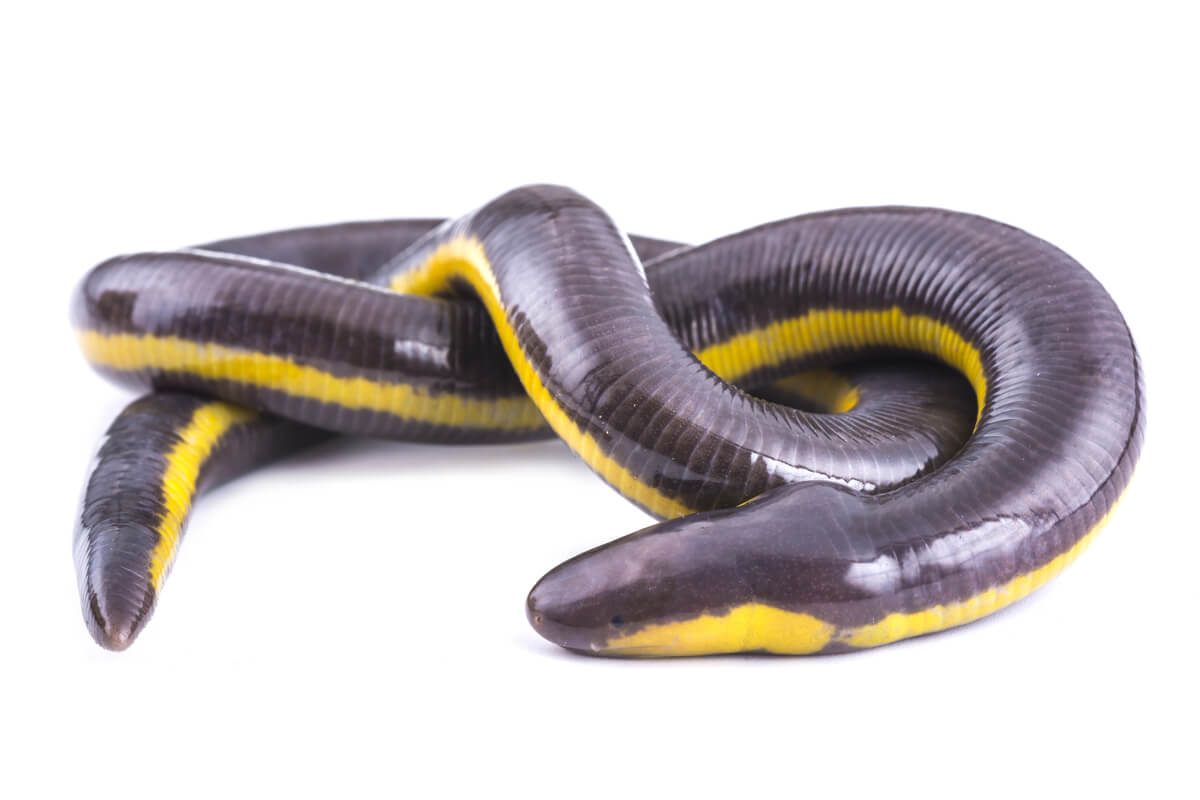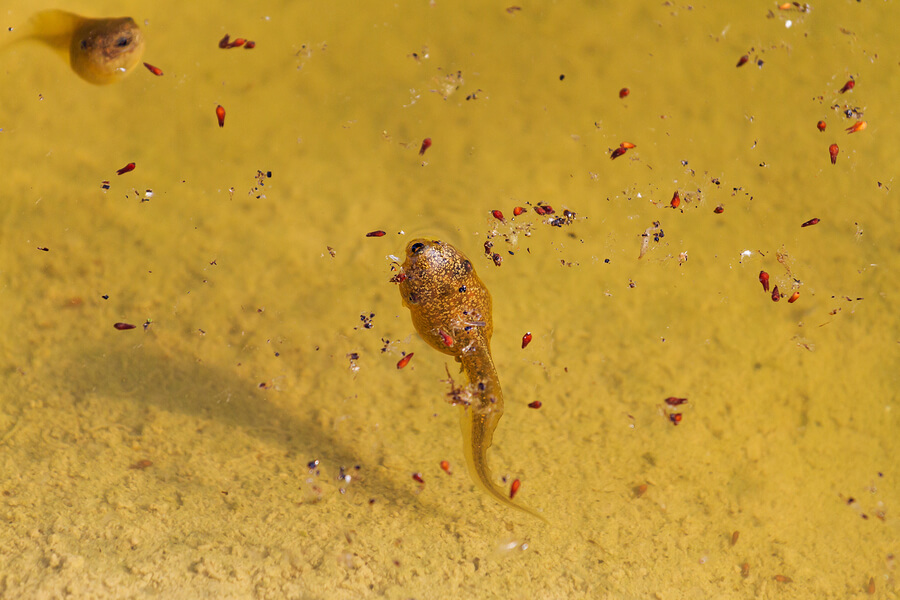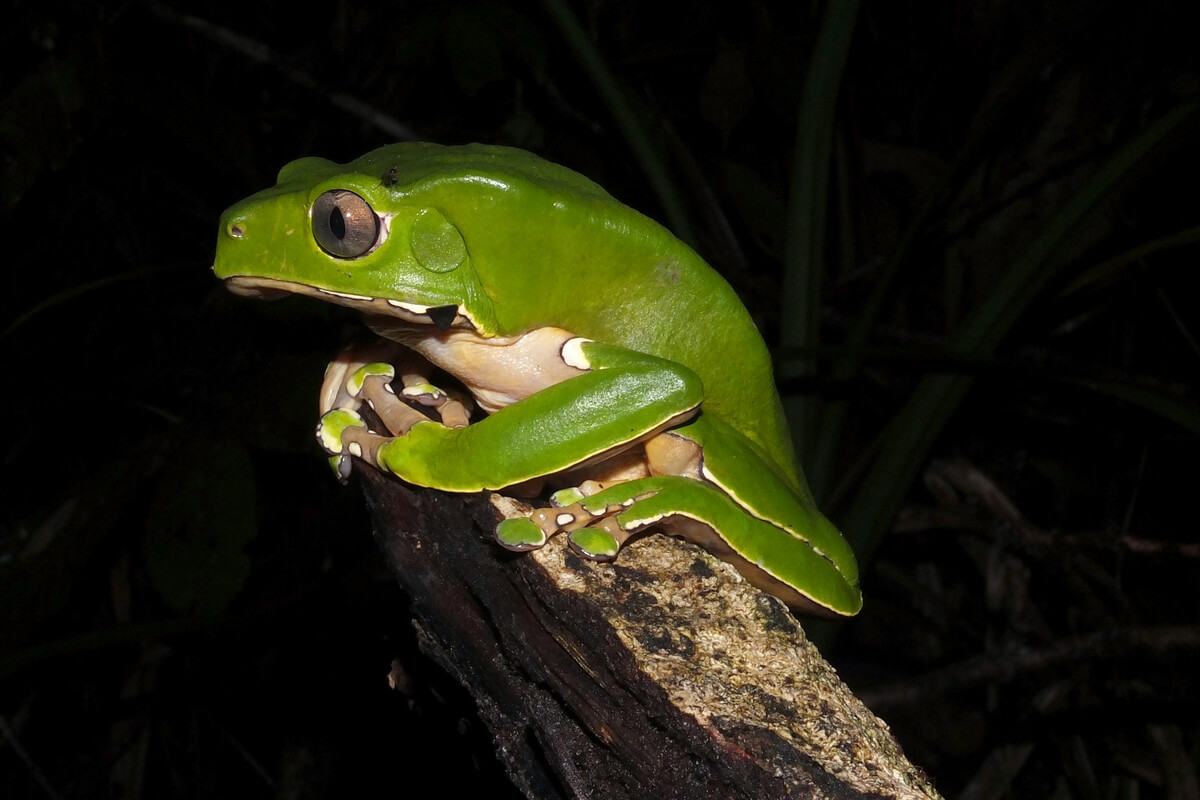How Do Amphibians Breathe?


Written and verified by the biologist Samuel Sanchez
Amphibians are vertebrate tetrapods belonging to the Amphibia class, within the Animalia kingdom. This taxon includes some 8000 different species, of which approximately 90% are frogs. Frogs, toads, newts, salamanders, and caecilians are fascinating animals, but do you know how amphibians breathe?
You may have heard that these animals breathe through their skin. As you’ll see in the following article, this isn’t far from the truth, but there are plenty of nuances and a lot to learn about this group of vertebrates. If you want to find out everything about respiratory gas exchange in the amphibian world, read on.
The amazing world of amphibians
Before exploring the respiratory mechanisms of these animals, we’re interested in providing some brushstrokes on their physiology and taxonomy. Amphibians are a class that’s separated into 3 different groups with representatives alive today: Salientia (frogs, toads, and relatives), Caudata (salamanders, newts, and relatives) and Gymnophiona (caecilians).
Frogs and toads are the most famous representatives of this group, as, of the 8000 existing species, more than 90% belong to the Salientia group. They don’t have a tail, and have generally long, strong hind limbs and very rough skin. It should be noted that the distinction between toad and frog is of no taxonomic interest.
Caudates are easy to differentiate from the previous group, as they have a tail, a much more elongated body, and similar front and rear extremities. Its body is usually fusiform, as many of these species spend much of the day underwater hunting and reproducing.
Finally, we need to highlight the group of caecilians – very shy, rare amphibians shaped like a snake or worm. Apart from the pair of olfactory tentacles on their heads, these animals don’t have any limbs, and their eyes are often severely stunted. They live underground and, as of today, about 200 species have been recorded, as indicated by National Geographic.

How do amphibians breathe?
Now that you know a bit more about the physiology of these animals, we’re ready to tackle the question of how amphibians breathe on a general level. We’ll tell you all about it based on the different stages in its life cycle.
Respiration of the larvae
As you may already know, most amphibians go through a larval stage in the water, with exceptions. One such example is Salamandra salamandra, which sometimes gives birth to fully metamorphosed live young. At this stage, tadpoles have gills and their respiration is completely aquatic.
In the case of frogs and toads, tadpoles have internalized gills covered by skin, forming an opercular chamber with internal gills ventilated by spiracles. However, these begin to lose prominence when the animal begins to develop its limbs, as this coincides with the appearance of the lungs.
Interestingly, studies have shown that the surface tension of water is an important regulator of respiration in amphibians during their larval stage. When they’re less than 3 millimeters long, the larvae are unable to overcome the force of the water-air barrier and can’t take advantage of atmospheric oxygen to develop.
When they reach the right size, the tadpoles can break the surface tension of the water and begin to train their lungs for life on land.

How do adult amphibians breathe?
The metamorphosis of amphibians is marked by the disappearance of the tail in frogs and toads and the development of the limbs, but also by the reabsorption of the branchial structures. This event marks the point of no return, as adult specimens are usually unable to live their entire lives in the aquatic environment.
Amphibian lungs are very archaic compared to those of mammals and birds. They have very few internal septa and the alveoli are long, so the oxygen diffusion rate to the blood is very low. The mechanical act of breathing is carried out by mouth pumping, but this isn’t enough to supply all the tissues of the animal.
Therefore, as studies indicate, the skin is often the main respiratory organ in many cases. The outer shell of the amphibian is capable of handling 0 to 100% of oxygen uptake and 20 to 100% of carbon dioxide excretion. Their epidermis is very thin and permeable for the gas exchange, which allows these animals to breathe almost exclusively through it.
Characteristics of skin respiration
At this point, it’s already very clear to us that most of the respiration of amphibians is carried out by their epidermal structures. It may seem that this method is rudimentary and chaotic, but nothing is further from the truth. These animals are able to regulate blood flow by means of their skin, with which they can control gas exchange to some extent.
In many amphibians, 20 to 95% of the respiratory capillaries are in the skin. Gas exchange occurs mostly in the outermost and thinnest layer of the animal – the epidermis – and this is in contact with the rest of the animal’s body through veins, arteries, venules and arterioles.
Interestingly, sources already cited emphasize that blood flow to the skin is reduced when the animal is exposed to air. In other words, if there’s a lack of humidity in the environment, the exchange of gases is reduced to minimize the loss of water. The vasodilation and vasoconstriction of these capillaries are encoded by the brain, and is, to some extent, voluntary.
Some species that reduce their metabolic rate to a minimum in winter breathe constantly (and only) through their skin.

A group requiring special protection
Being able to breathe through the skin is a huge benefit, but it also has a very clear associated cost. Being thinner and more breathable, the epidermis of amphibians puts them at the mercy of the environment completely and they risk dying from dehydration if they don’t have a source of water nearby. For this reason, they’re animals that are completely linked to humid environments.
In addition, the permeability of this organ makes frogs, toads, salamanders, newts and caecilians very vulnerable to chemicals and environmental changes. Knowing how amphibians breathe and their environmental dependence, it isn’t surprising to learn that 41% of the amphibians discovered and analyzed are in danger of extinction.
All cited sources were thoroughly reviewed by our team to ensure their quality, reliability, currency, and validity. The bibliography of this article was considered reliable and of academic or scientific accuracy.
- Caecilians, National Geographic. Recogido a 21 de julio en https://www.nationalgeographic.com/animals/amphibians/facts/caecilians
- Schwenk, K., & Phillips, J. R. (2020). Circumventing surface tension: tadpoles suck bubbles to breathe air. Proceedings of the Royal Society B, 287(1921), 20192704.
- Tattersall, G. (2007). Skin breathing in amphibians. Endothelial Biomedicine: a Comprehensive Reference, 85-91.
- Romer, A. S. (1972). Skin breathing—primary or secondary?. Respiration physiology, 14(1-2), 183-192.
- Burggren, W., & Pan, T. C. (2019). Chemoreceptive control of ventilation in amphibians and air-breathing fishes. Airway Chemoreceptors in the Vertebrates, 151-184.
This text is provided for informational purposes only and does not replace consultation with a professional. If in doubt, consult your specialist.